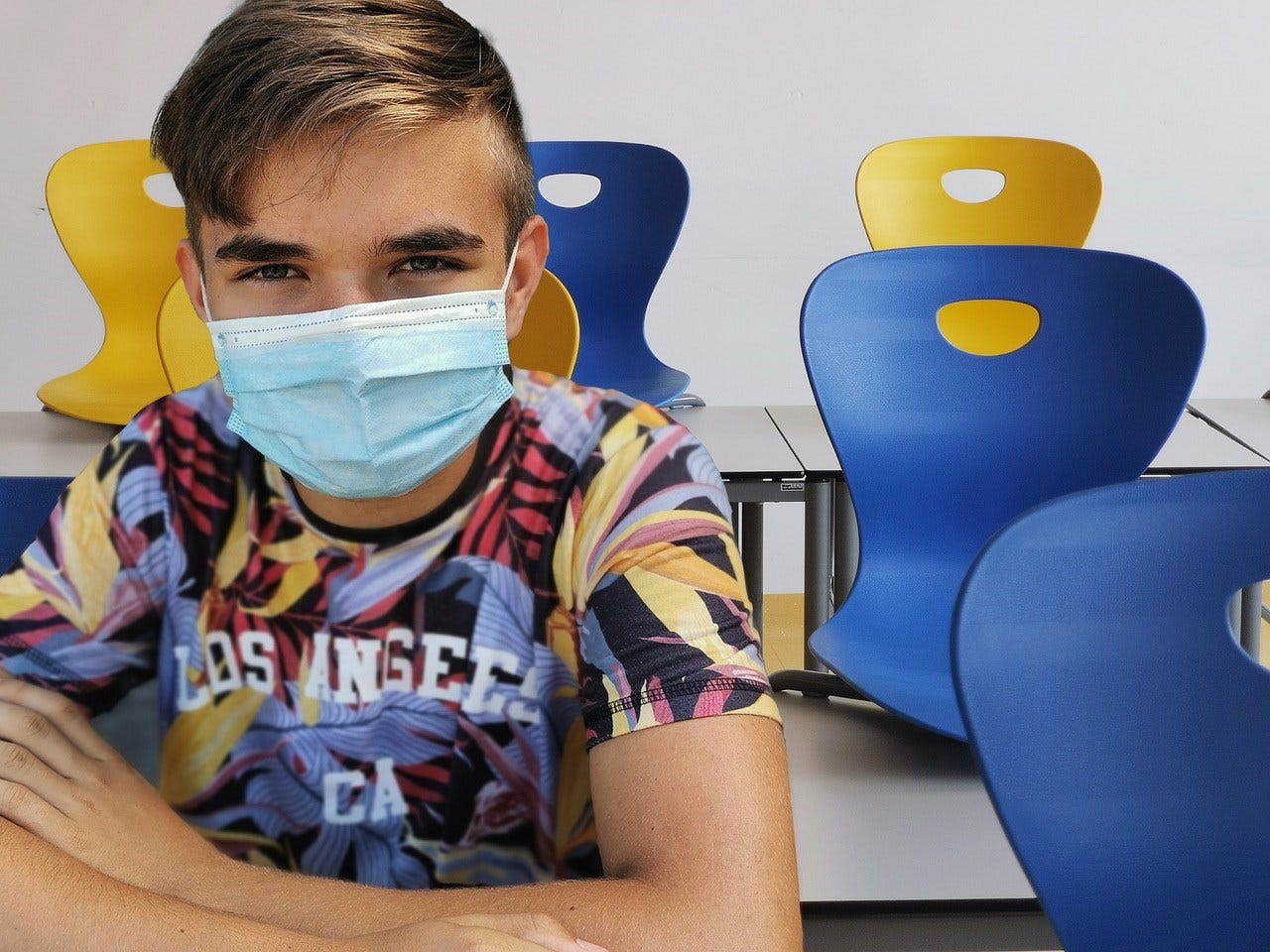IUSM Study: Asymptomatic Kids Are Rare & May Not Spread COVID-19
 "When the numbers in the community are low
"When the numbers in the community are low
Subscriber Benefit
As a subscriber you can listen to articles at work, in the car, or while you work out. Subscribe NowThe challenge of how to do school has loomed large throughout the pandemic as questions swirl around the issue—are kids immune? Or, are they “super spreaders?” And worse, are they spreading it without symptoms? The vast majority of COVID-19 studies—including the first two phases of the statewide study led by the Indiana University Fairbanks School of Public Health —don’t include children under 12. However, a small study at the IU School of Medicine (IUSM) set out to find answers—with a heavy focus on young kids—and the results are in: asymptomatic infection in kids is rare, they may not be spreading it at all, and the lead scientists are adamant it must be studied more, especially in school settings.
“What I feel sad about is the policies that are being [followed] have been created with very little data,” says Dr. Chandy John, IUSM director of the Ryan White Center for Pediatric Infectious Disease and Global Health and the study’s co-leader. “The policies are designed to be conservative, which I think is appropriate, but there are probably better ways of doing this, and that’s why we need the data.”
While scientists suspected children under the age of 10 could have the virus but not show symptoms, this was the first study to confirm it. Called TACTIC (Tracking Asymptomatic COVID-19 Through Indianapolis Communities), the community-based study sampled 511 adults and children in Marion County, with a special focus on ensuring the samples reflected Indianapolis’ diverse population.
The study found only one asymptomatic infection in the entire pool, and interestingly, it was a seven year-old who had no known contacts with the infection. And even surprising to John, the child did not spread the virus to any of the five family members living in the same home, which included four other children. While it’s a small study, Dr. James Wood, the study’s co-leader and infectious disease physician at the Ryan White center, says that lack of spread in the child’s home—“even though they’re a large family with other kids”—makes him hopeful kids aren’t spreading the virus in large numbers.
“With the coronavirus and kids, there’s a risk-benefit ratio; there’s not usually a clear-cut ‘right’ answer, so it’s understanding what gives us the most benefit with the least amount of risk,” says Wood. “I think the benefits of school go beyond education, so there are a lot of benefits for getting kids into school in-person. When the numbers in the community are low, I think it’s really important that we get kids back into school in person as much as possible.”
John says the team used several controls to confirm the child was not a false positive, and none of the family members developed any symptoms throughout several weeks of follow-up.
“[During the pandemic, kids and school] have been a big problem nationwide, and I’m really surprised that this hasn’t been more of a high priority for funding agencies to study what’s happening in schools,” says John. “What happens in schools now—basically, if a kid gets sick, everyone goes home and quarantines—I think is appropriate with the data we have. But that’s very disruptive to school and really not a great way for kids to learn.”
So John has made it his mission to drill down even more and study the topic in detail—and most importantly—at a school. He wants to uncover how much asymptomatic infection kids have, how often they’re infected and use rapid testing to decrease the quarantine period and “get them back in school if they’re negative.”
John is working feverishly to get funding for a school-based study; he says discussion is underway and it’s gaining traction.
“Seventy-five percent of kids we’ve seen at Riley [Hospital for Children] with COVID-19 have been Hispanic or African American—that’s a very striking statistic to me,” says John. “I’d like to do [the study] in a school that has a sizeable Hispanic and African American population, because in terms of the kids who get sick, that’s the population. It’s important to study those groups, because they’re the highest-risk groups.”
The researchers will soon launch the TACTIC 2 follow-up study, which will test the original TACTIC participants for antibodies to the novel coronavirus, but John contends a school-based study is his “dream” scenario and will best answer the questions school leaders and parents have been wrestling with for months.
“For any parent, this is the number one issue on their radar; they’re thinking about their kids and schooling and trying to get them to be able to stay in school,” says John. “We need to really study what’s happening with asymptomatic and symptomatic infections in schools to make intelligent decisions. The quest now is for a school-based study, and let’s hope we’re successful.”
John describes his “close to perfect” study in a Hoosier school; a project he says is gaining traction, but needs funding.
Wood says TACTIC is the first study in the U.S. to analyze asymptomatic COVID-19 infection in both children and adults in a community.
